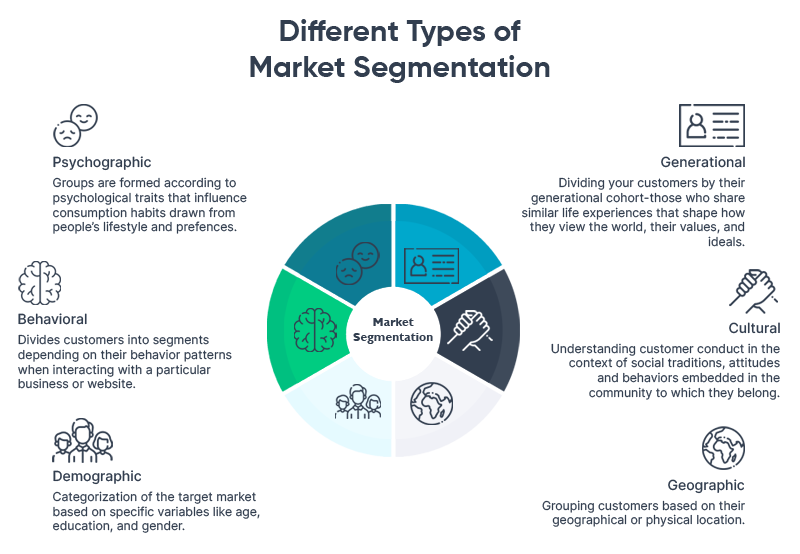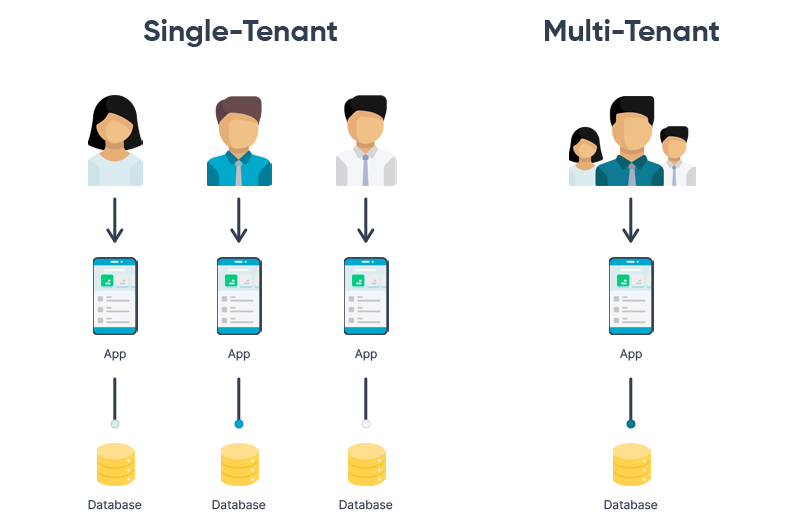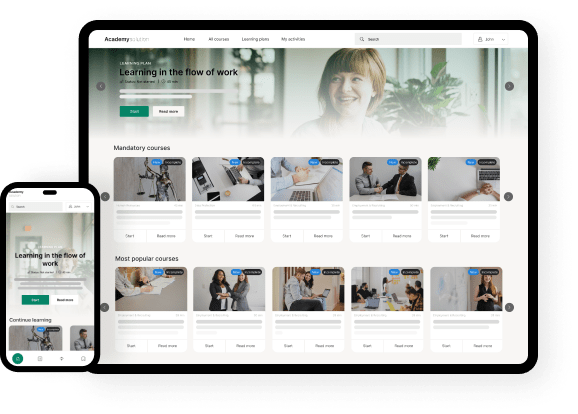We’re halfway through the year, and you still haven’t figured out how to start your own SaaS business? You’re full of enthusiasm, but you don’t have a concrete plan to get you started? Fret no more! In this blog post, we’re sharing a comprehensive guide on how to build your own SaaS company.
Did you know that 80 % of businesses use at least one SaaS application? And according to Cisco’s Annual Internet Report, 75 % of the total cloud workloads and compute instances will be in the form of a SaaS by 2022.
What is a SaaS product?
Software as a Service or simply SaaS is one of the three types of cloud-computing services. The other two are IaaS and PaaS. Furthermore, SaaS is a model of delivering software and applications to users through the internet.
A SaaS product is any web-based software hosted by a central provider and accessed by users for a specific subscription term. Others also call this cloud-based software an “on-demand software” because it enables users to subscribe on a pay-as-you-go or monthly/yearly billing basis.
SaaS platforms are popular because of their accessibility and cost-efficiency. A SaaS solution is deployed and accessed through the internet. Thus, it reduces the time usually spent on traditional installation methods.
In addition, SaaS developers or vendors also generally give SaaS businesses the necessary support services, which eliminates the need to hire more people to work on product troubleshooting and maintenance.
A comprehensive plan to start a SaaS business
Like any other enterprise, a SaaS business isn’t all rainbows and sunshine. It can be volatile at times. In fact, according to statistics, software development companies with an annual growth rate of 20 % have only an 8 % chance of surviving. It goes to show that one should take SaaS development seriously from the get-go. That being said, here are five useful tips to help you avoid some mishaps during your SaaS product development:
1. Find out who needs your product
This first step will serve as your basic premise or insight to set up your SaaS business. Every SaaS application is built upon the need to provide solutions to customers’ problems. Therefore, identifying future clients and their possible concerns will guide your research plan. But how are you supposed to identify your target audience?
There are plenty of ways to create buyer personas. You can hire an inbound marketing agency to assist you with the process of defining possible, future customers and outlining their buying journeys. But if you can do it on your own, there might be valuable information stacked inside your old files that you can benefit from. Here are a couple of tips for you to use in this process:
- Dig deep into your CRM data and look for customers who have paid the most and been with you the longest
- Request information about which companies your best existing customers work for from your sales team
- Take a deep dive into your company’s help desk center and make a list of your satisfied customers
- Rate your previous clients’ experience by conducting an online poll or survey. From your gathered data, determine who has given positive feedback.
Identifying user personas and their unique interests will provide you with a better understanding of the market’s status. Moreover, it will allow you to find out in which niche your new SaaS product can gain traction and who your customers might be.
2. Survey and analyze market segments
Now, you already know who your target customers are. It’s time to survey the market and determine whether it’s a good idea to introduce a new SaaS product.
To break into an unfamiliar market segment, make sure you have an answer to the following questions:
- Who are my competitors?
- What unique features does their product possess?
- What business models have they adopted?
- Do customers have specific requests that my competitors overlook?
Once market requirements are clear, it’ll be easier for you to define concrete strategies for SaaS development. It should also help you anticipate future problems and come up with immediate solutions.
Defining Market Segmentation
A market segment is a group of customers who have similar likes and dislikes in a homogenous market. These customers can be individuals, families, businesses, or a blend of all types. Marketers categorize customers into market segments based on their demographics, behaviors, location, and buying habits.

Market segmentation divides target markets into smaller and more defined categories. It divides customers and consumers into different groups with similar characteristics, whether interests, needs, or demographics.
3. Narrow down the specific solution(s) you’ll provide
Every SaaS product should offer clear and consistent services. Remember, customers will only sign up for something that solves their particular needs and requirements.
Keep in mind that your product can’t resolve customers’ problems simultaneously. One of the many issues that SaaS companies face is casting broad objectives only to fall short of meeting users’ expectations. The key takeaway here is that you must ensure that you focus on solving a specific problem at a time.
And this is where market segmentation becomes relevant because it enables you to stick to a particular group and establish a loyal customer base that will serve as your primary source of revenue.
4. Define your product’s core functionalities
Cloud computing can assist in solving a number of tasks. However, you should determine as early as possible which features should be included in your SaaS solution. Always remember that your solution must possess the core functionalities that constitute a basic SaaS model. Some of the key features of SaaS applications include:
Multi-tenancy architecture
We often hear the word “tenancy” when talking about cloud applications. SaaS tenancy implies the exchange of computing services in private or public environments. Customers are considered “tenants” who pay for access or subscription to a SaaS application. Generally, there are two main types of tenancy models for a SaaS: single and multi-tenancy.
While we’d like to focus on the benefits of a multi-tenancy architecture, we’ll also discuss how it differs from a single-tenancy model.
With a single-tenant SaaS model, a single instance of software serves a single customer. Essentially, each customer has his or her own dedicated server and supporting infrastructure.
The benefits of a single-tenant SaaS are:
- Improved security
- Dependability
- Easy restoration and backup
- Individual upgrades
- Seamless self-hosted migration
On the other hand, multi-tenancy is built on a single instance of the software that multiple organizations share. While each tenant shares a single software application and database, each of them remains isolated and invisible to other tenants. The benefits of multi-tenancy are:
- Cost efficiency
- Easy integration
- Larger computing capacity
- Fewer maintenance costs

Moreover, a multi-tenant SaaS is highly configurable, enabling businesses to tailor their application to a unique purpose or need.
Automated provisioning
Provisioning is one of the most critical features of a cloud-based application. SaaS provisioning refers to the necessary process of establishing cloud-based software delivery to users. Think of it as a way to set up an IT infrastructure that will allow users and other systems access to data and resources.
Since access to a SaaS application should be smooth and uninterrupted, provisioning the users requires automation. Automated provisioning is the approach of granting and managing users’ access to applications, systems, and data using automated methods. But just as automated provisioning is available in SaaS, removing user access to systems, applications, and data must also be possible. You call this automated de-provisioning.
Automated provisioning and de-provisioning can contribute to easy employee onboarding and offboarding. It will also enable you to streamline user management across applications.
Data security
Gone are the days when traditional IT environments were housed in on-premises datacenters. Instead, the shift towards subscription-based services paved the way to lower in-house data and application maintenance costs. However, the hype for a SaaS business model caused an increase in data flowing to and from SaaS vendors. Additionally, it called for more stringent and sophisticated security measures, which required a continuous rethinking of a software’s overall protection infrastructure.

Cloud security threats can have an astronomical impact on your investment. In fact, today’s average cost of a data breach amounts to $3.86 million (or $148 per compromised record). As cloud infrastructures continue to evolve and become more sophisticated, so do various security risks.
According to McAfee’s report, the number of threats from external actors affecting cloud services increased by 630 % in 2020. These threats targeted mostly collaboration services like Microsoft 365. Yet, top critical security issues for SaaS applications include:
- Security misconfiguration
- Identity theft
- Cross-site scripting
- Poor logging and monitoring
To optimize SaaS data security, Eric Kaasenbrood, Chief Information Security Officer of Security Magazine, suggests that a modern security architecture should have “cloud-based identity and access management like multi-factor authentication and federation login”.
For example, Multi-factor authentication using Azure AD creates a second form of authentication that helps eliminate the risk of serious security breaches. In this authentication workflow, users are asked during the sign-in process to give another form of identification, such as a code (via email or SMS) or a fingerprint scan.
On the other hand, federated login allows users to utilize a single authentication ticket or token to access all networks of different IT systems. This authentication process is set up by an identity provider (parent organization) who will save users’ login credentials. Once the authentication is complete, users will have access to other federated domains. The advantage of choosing this method is that users don’t have to go through other separate login processes.
Today SaaS applications are often designed on top of other cloud providers, like Microsoft Azure, AWS, and Google Cloud. And it will be an advantage for your company to leverage the security mechanisms these prominent cloud providers already offer.
Subscription management
Saying that existing customers offer a better rate of ROI than new customers may sound like an understatement. But for a SaaS business that wants to leave a lasting impression, it needs to focus on retaining and satisfying its loyal customers.
In a fluid industry such as the SaaS market, companies must handle subscription management with maximum efficiency – especially for their existing users. We’re talking about optimizing customer lifecycle operations, such as managing trials, issuing refunds, and processing subscription changes.
Contrary to what others think, SaaS subscription management is not just handling recurring bills. Recurring billing for a SaaS enterprise can be as simple as sending online invoices to customers. In contrast, subscription management is a top-level payment operation that deals with customer-related issues during a transaction.
SaaS subscription management matters because it covers the entire customer lifecycle — from the moment clients subscribe to the time they cancel. It affects the different processes that serve as critical factors in maintaining healthy customer relationships.
5. Start a partnership with Cursum
Now that you’ve laid down your plan, it’s time to discover ways you can scale your company. A simple strategy to achieve growth is to build a strong partnership with a company that shares the same passion for innovation.
When it comes down to leveraging well-known SaaS partners such as Microsoft, a collaboration with Cursum will give you an instant competitive advantage. Begin your journey with us and we’ll show you how to turn your ideas into a unique business brand. Follow this link or contact us to find out how we can help you jumpstart your SaaS business.


